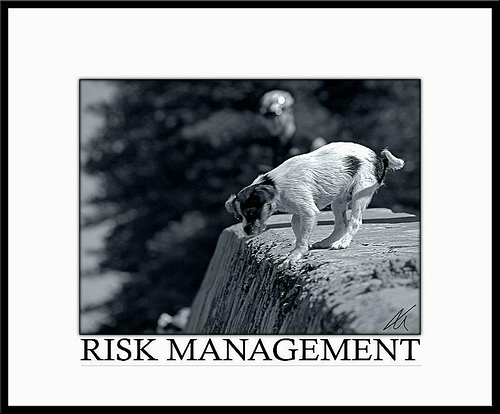Risk assessment is about more than ensuring that employees don’t slip on the stairs and that there is proper ventilation. Organisational risk assessment deals with financial matters, operational matters and legal compliance. It’s a holistic approach to ensure that businesses operate efficiently, profitably and legally on all levels and it is essential.

On the Australian Institute of CPAs’ website, Laurie Scofield and Eric Martinez say that the first step in risk assessment is to identify inherent risks across all business departments and functions – those that pose a danger to the successful functioning of the business before any controls have been implemented. Inherent risks can be as simple as the location and accessibility of the petty cash box and as complex as poorly worded contracts and terms and conditions.
Risks vary
What is risky in one industry is not necessarily risky in another, so you need to analyse inherent risks within your business’s context. For example, the risk of embezzlement is greater in a business that offers high-value financial services than in a two-man plumbing operation. The risk of falling from a window is greater in a high-rise office block than a ground floor home office. Accountants don’t necessarily need to wear hard hats. Carpenters don’t need to sign confidentiality agreements.
It can be very difficult for business owners and managers to identify all the risks themselves. It’s one thing to decide where to keep the petty cash box and who keeps the key, but it’s another to find the legal loopholes in work contracts. This is why companies hire professional risk assessment and management companies.
Risks have been identified, now what?
Obviously, solutions have to be designed to address the risks and to ensure that worst case scenarios never occur. But equally obviously, it’s no good having solutions or plans if no one knows about them. Part of the risk management process is communicating the risks and the management plans to everyone concerned; that includes all employees, temporary workers, contract workers, and managers and directors.
They need to be communicated clearly so that there is no possibility of misunderstanding. They also need to be periodically reinforced so that they remain fresh in people’s minds. And, they need to be monitored and updated as time goes by to accommodate changing work conditions and industry regulations. These are all services offered by risk management companies.
Risk is a natural part of life, but that doesn’t mean you can’t plan for it and mitigate it. This is especially true when your livelihood and the livelihoods of others are on the line.
This guest post was written by Sandy Cosser on behalf of Change Consulting Group. Change Consulting Group offers a variety of risk assessment and change management solutions for private and public companies and NPOs.
Successful Risk Management Requires A Holistic Approach

